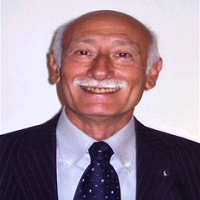Investigation of Anti-Bacterial, Antioxidant (Peroxynitrite scavenging and Hydroxyl radical scavenging) Activity of Cordia myxa and Screening of Its Functional Groups Using Fourier Transform Infrared Spectroscopy Technique
Keywords:
Cordia myxa, antibacterial, Functional Groups, FTIR TechniqueAbstract
There has been a lot of recent buzz about medicinal plants as a viable alternative to chemical treatments due to their inexpensive production costs and relative lack of adverse effects. However, phenolics and flavonoids derived from plants have many positive biological effects, including antioxidant, anti-inflammatory, and antibacterial actions; these compounds are very lucrative for the cosmetics, pharmaceutical, and food industries. Reactive oxygen species (ROS) and free radicals are harmful molecules that can be produced by cells in the human body. These molecules can harm live cells and lead to various clinical disorders. Discovering the bioactive components and antibacterial activities of Cordia myxa fractions is the main objective of the current work. The fruits that were picked were thoroughly rinsed with a combination of tap water and deionized water. The crop was harvested when it was still edible, then dried in the shade and pulverised into a powder. In preparation for the following tests, the fruit extract was diluted in an appropriate proportion of ethanol. Subsequent to extraction, all tests were carried out no later than 72 hours. As part of the preparation for FTIR analysis, Peak (Wave number cm-ˡ), Peak (Wave number cm-ˡ), were 675.09, 692.44, 738.74, 813.96, 974.05, 1008.77, 1049.28, 1093.64, 1232.51, 1276.88, 2922.16, 1276.88, 1606.70, 1647.21. Streptococcus pyogenes was significantly inhibited by the Cordia myxa metabolites (28.94 ±0.46).
Downloads
References
Moacă, E, Pavel, I, Danciu, C. Romanian Wormwood (Artemisia absinthium L.): Physicochemical andNutraceutical Screening. Molecules 2019, 24, 3087.
Zhao J. Nutraceuticals, nutritional therapy, phytonutrients, and phytotherapy for improvement of humanhealth: a perspective on plant biotechnology application. Recent patents on biotechnology. Recent PatBiotechnol 2007; 1: 75-97.
Lima GP, Vianello F, Corrêa CR, Campos RA, Borguini MG. Polyphenols in fruits and vegetables and itseffect on human health. Food Nutr Sci 2014: 1065-1082.
Brglez Mojzer E, Knez Hrnčič M, Škerget M, Knez Ž, Bren U. Polyphenols: extraction methods, antioxidativeaction, bioavailability and anticarcinogenic effects. Molecules 2016; 21: 901.
Finkel T, Holbrook NJ. Oxidants, oxidative stress and the biology of ageing. Nature 2000; 408: 239-247.
Nimse SB, Pal D. Free radicals, natural antioxidants, and their reaction mechanisms. RSC Adv 2015; 5:27986-28006. 9. Poljsak B, Šuput D, Milisav I. Achieving the balance between ROS and antioxidants: whento use the synthetic antioxidants. Oxid Med Cell Longev 2013; 2013: 956792.
Jihad MA, Noori FTM, Jabir MS, Albukhaty S, AlMalki FA, Alyamani AA. Polyethylene glycolfunctionalized graphene oxide nanoparticles loaded with nigella sativa extract: a smart antibacterialtherapeutic drug delivery system. Molecules 2021; 26: 3067.
Alyamani AA, Albukhaty S, Aloufi S, AlMalki FA, Al-Karagoly H, Sulaiman GM. Green fabrication of zincoxide nanoparticles using phlomis leaf extract: characterization and in vitro evaluation of cytotoxicity andantibacterial properties. Molecules 2021; 26: 6140.
4. Amali, A.A., Rekha, R.D., Lin, C.J., Wang, W.L., Gong, H.Y., Her, G.M. and Wu, J.L. (2006). Thioacetamide induced liver damage in zebrafish embryo as a disease model for steatohepatitis. Journal of Biomedical Science 3, 1-8.
Aruoma, O.I. (2002). Neuroprotection by dietary antioxidants: new age of research. Nahr Food, 46, 381-382.6.Aruoma, O.I. (2003). Methodological considerations for characterizing potential antioxidant actions ofbioactive components in plant foods. Mutation Research, 523/524, 9-20.
Bagchi, D., Sen, C.K., Ray, S.D., Das, D.K., Bagchi, M., Preuss, H.G. and Vinson, J.A. (2003). Molecularmechanisms of cardioprotection by a novel grape seed proanthocyanidin extract. Mutation Research, 523/524,87-97.
Bahorun, T., Aumjaud, E., Ramphul, H., Rycha, M., Luximon-Ramma, A., Trotin, F. and Aruoma, O.I.(2003). Phenolic constituents and antioxidant capacities of Crataegus monogyna (hawthorn) callus extracts.Nahr Food, 47, 191-198.
Bravo, L. (1988). Polyphenols: chemistry, dietary sources, metabolism and nutritional significance,Physiology Reviews, 56, 317-333.
Cheng, T.J. Hsu, L.F. and Chen, F.H. (1993). Antihypersensitive principles from the leaves of Melastomecandidum. Planta Medica, 59, 405-407.
Chu,Y.F., Sun, J., Wu, X. and Liu, R.H. (2002). Antioxidant and antiproliferative activities of commonvegetables. Journal Agriculture and Food Chemistry, 50, 6910-6916.
Di Carlo, G., Mascolo, N., Ice, A.A. and Capasso, F. (1999). Old and new aspects of a class of naturaltherapeutic drugs. Life Science, 65, 337-353.
Al-Musawi S, Albukhaty S, Al-Karagoly H, Sulaiman GM, Alwahibi MS, Dewir YH, et al. Antibacterialactivity of honey/chitosan nanofibers loaded with capsaicin and gold nanoparticles for wound dressing.Molecules 2020; 25: 4770.
Namukobe J, Sekandi P, Byamukama R, Murungi M, Nambooze J, Ekyibetenga Y, et al. Antibacterial,antioxidant, and sun protection potential of selected ethnomedicinal plants used for skin infections in Uganda.Trop Med Health 2021;49:49.
Meghwal PR, Singh A, Kumar P, Morwal BR. Diversity, distribution and horticultural potential of Cordiamyxa L.: a promising underutilized fruit species of arid and semi-arid regions of India. Genet Resour CropEvol 2014; 61: 1633-1643.
Sivalingam PN, Singh D, Chauhan S. Morphological and molecular diversity of an underutilized fruit crop –Cordia myxa L. germplasm from the arid region of Rajasthan, India. Genet Resour Crop Evol 2012; 59: 305-316.
Tańska M, Roszkowska B, Czaplicki S, Borowska EJ, Bojarska J, Dąbrowska A. Effect of fruit pomaceaddition on shortbread cookies to improve their physical and nutritional values. Plant Foods Hum Nutr2016;71:307-313.
Yaermaimaiti S, Wu T, Aisa HA. Bioassay-guided isolation of antioxidant, antimicrobial, and antiviralconstituents of Cordia dichotoma fruits. Ind Crops Prod 2021; 172: 113977.

Downloads
Published
How to Cite
Issue
Section
License
Copyright (c) 2024 Clinical Images and Case Reports

This work is licensed under a Creative Commons Attribution 4.0 International License.
Clinical Images and Case Reports












